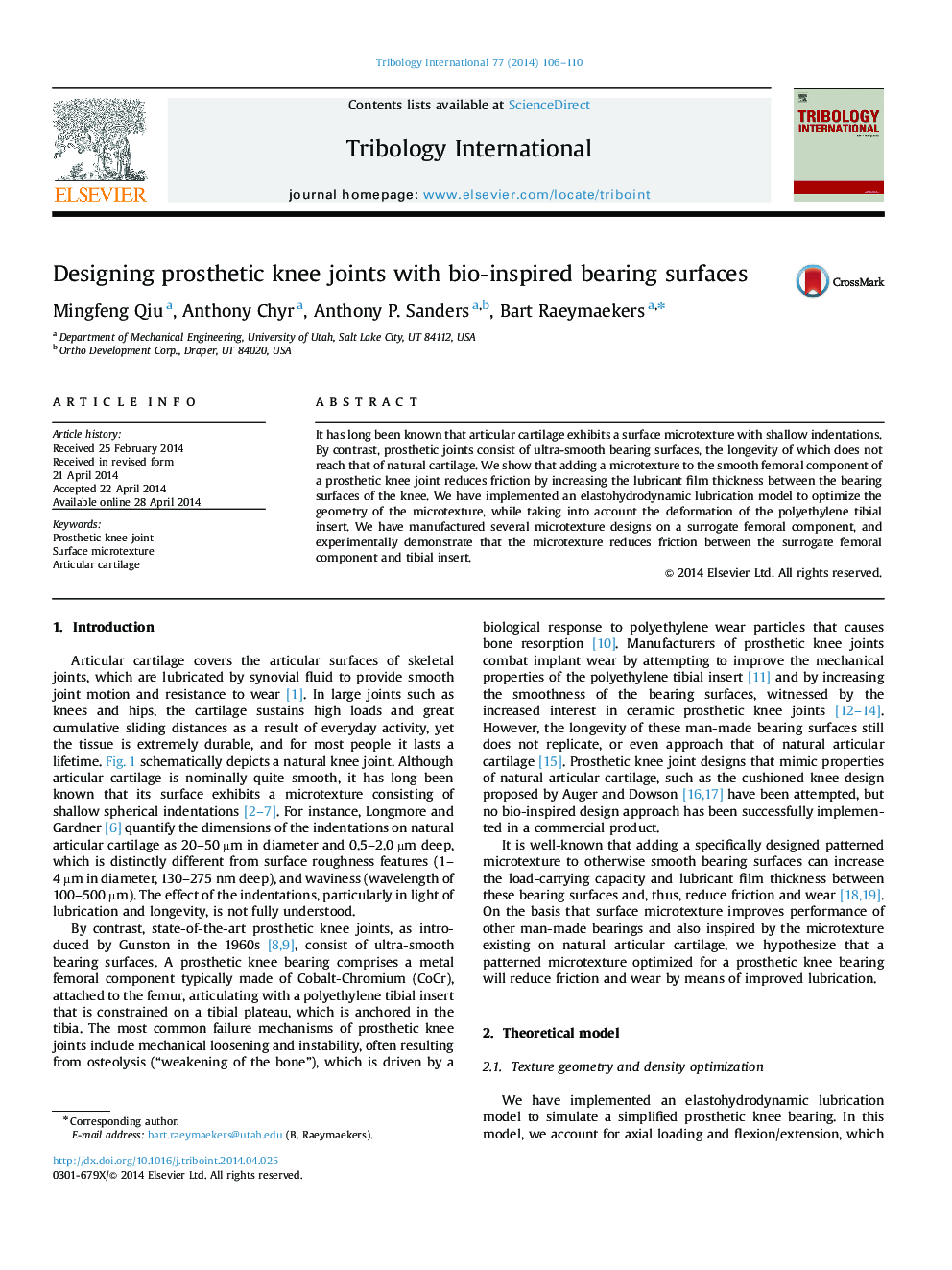| Article ID | Journal | Published Year | Pages | File Type |
|---|---|---|---|---|
| 614826 | Tribology International | 2014 | 5 Pages |
Abstract
It has long been known that articular cartilage exhibits a surface microtexture with shallow indentations. By contrast, prosthetic joints consist of ultra-smooth bearing surfaces, the longevity of which does not reach that of natural cartilage. We show that adding a microtexture to the smooth femoral component of a prosthetic knee joint reduces friction by increasing the lubricant film thickness between the bearing surfaces of the knee. We have implemented an elastohydrodynamic lubrication model to optimize the geometry of the microtexture, while taking into account the deformation of the polyethylene tibial insert. We have manufactured several microtexture designs on a surrogate femoral component, and experimentally demonstrate that the microtexture reduces friction between the surrogate femoral component and tibial insert.
Keywords
Related Topics
Physical Sciences and Engineering
Chemical Engineering
Colloid and Surface Chemistry
Authors
Mingfeng Qiu, Anthony Chyr, Anthony P. Sanders, Bart Raeymaekers,
